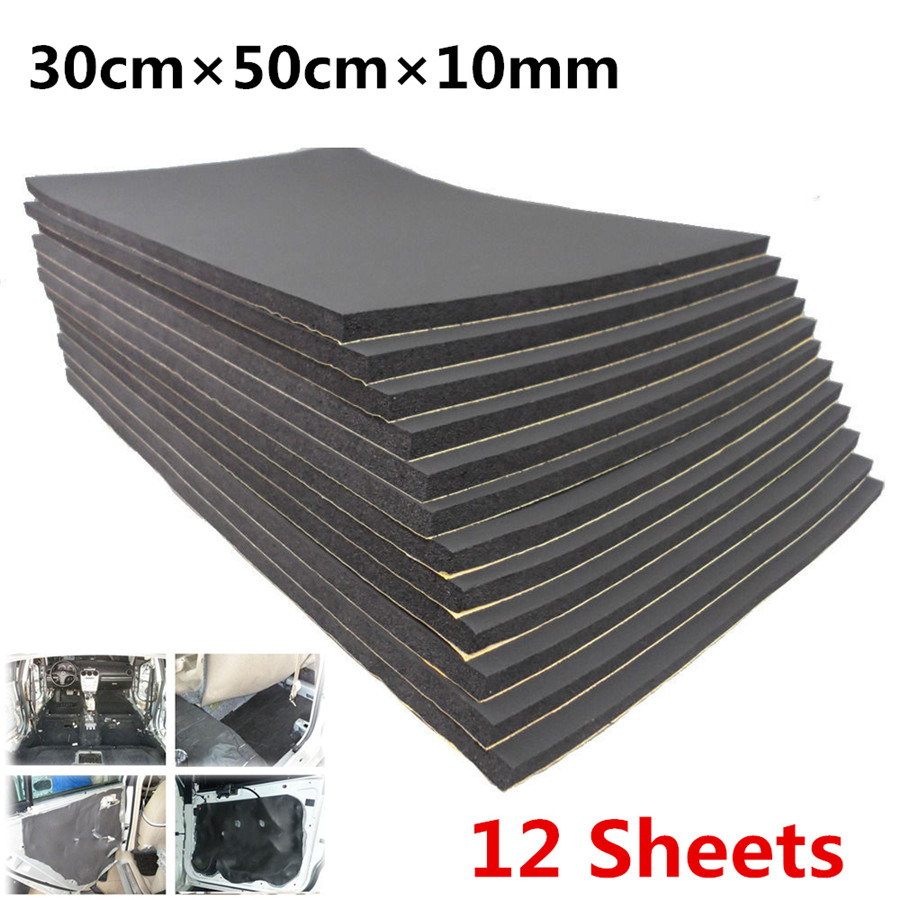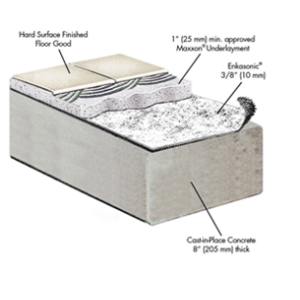
Trowel a light skim coat of the slurry approximately 1 1/2‐inch wide around the perimeter of the bottom side of the reinforced cement backer.ġ5d. Apply more slurry on top of the tape.ġ4d. Dip 2.5‐inch or wider high strength polymer coated fiberglass tape into the slurry and center it on chalk lines.ġ3d. Prepare a slurry of Thin‐Set mixed with Acrylic Mortar Admix to proper consistency.ġ2d. Snap chalk lines on the Kinetics Soundmatt marking the joint placement of the reinforced cement backer board sheets.ġ1d. Lay down minimum 1/2‐inch thick reinforced cement backer board sheets with a 1/4‐inch gap between the units, offsetting the joints 8 to 10‐inches from the Soundmatt below.ġ0d. Roll out a layer of builders felt or 6‐mil poly sheeting with 6 to 8‐inch overlap over the Soundmatt.ĩd. Provide adequate ventilation to carry off excess moisture during installation.Ĩd. Option D) Reinforced cement backer board Environmental Requirements: Install only when the ambient temperature is above 55 degrees F.Note: Do not nail, screw, and/or staple into the Soundmatt with fasteners. Secure plywood or OSB layers together with 7/8-inch long screws spaced within 3-inches of the edges and spaced no greater than 8-inches in the field.

Note: Finished flooring manufacturers often require 1/8-inch gap between top layer of plywood or OSB sheets to allow for expansionġ2c. Lay down second layer of 1/2-inch thick plywood or OSB layer oriented 90 degrees and with joints staggered at least 12-inches in relationship to first plywood layer. Trowel glue across the top of first layer of plywood or OSB.ġ1c. Lay down first layer of 1/2-inch thick plywood or OSB with joints staggered in relationship to Soundmatt joints.ġ0c. Note: Do not adhere or fasten the plywood to the Soundmatt.ĩc. Do not adhere felt or sheeting to the Kinetics Soundmatt. Optionally, lay builders felt or 6‐mil poly sheeting with 6 to 8‐inch overlap on top of the Soundmatt. Option C) Plywood and OSB (Oriented Strand Board)Ĩc.Pour 1 1/2‐inch thick layer of Gypsum Concrete such as Maxxon Gyp‐Crete 2000, DuraCap, ThermaFloor, or Level‐Right (or approved equal). Place a single layer of moisture barrier such as Maxxon Moistop (or approved equal) with taped seams on top of Soundmatt and Kinetics SRP perimeter isolation board.ĩb. Suggested reinforcing is 2‐inch x 2‐inch x 16/16 gauge welded wire mesh (TCA #RF900‐96).Ĩb. Suggested thickness for mortar bed is between 1‐1/4 and 2‐inches, inclusive (TCA #F111‐96).ī. Install mortar bed or lightweight concrete as directed by manufacturer.Ī. Place a single layer of 6‐mil poly sheeting with 6 to 8‐inch overlap on top of Soundmatt and Kinetics SRP perimeter interface.ĩa. Option A) Wire‐reinforced mortar bed, lightweight concreteĨa.Note: Never attach the Soundmatt with nails, screws, or staples. Keep traffic on Soundmatt to an absolute minimum. Lay Soundmatt over designated area, do not use adhesive, do not overlay or leave gaps between the sheets or at perimeter.ħ. Note: Never attach the perimeter interface with nails, screws, or staples.ĥ.

Adhere Kinetics SRP to any protrusions through the floor system including floor drains, columns, pipes, conduit, etc following steps 1‐3. Firmly adhere it to any wall or vertical position (including door frames) surrounding the perimeter of the Soundmatt installation area.Ĥ. Apply spray adhesive (such as Camie 363 High Strength Fast Tack Spray Adhesive), following manufactures directions, to one side of Kinetics SRP perimeter isolation material (alternatively double sided tape may be used).ģ. Cut Kinetics SRP isolation material to a width equal to 1/4‐inch less than planned floor system height.Ģ. Wood subfloors shall be free of weak spots, squeaks, protruding nails, screws, staples, and be clean and dry.ġ.Concrete subfloor shall be troweled smooth, free from spills/voids, and be clean and dry.If a waterproof membrane is used, it shall be load bearing.DO NOT use Soundmatt to bridge spans or low areas in the subfloor.Slope of subfloor shall not exceed 1/4‐inch per foot.variation in the slab shall be 1/4‐inch in 10‐feet and 1/8‐inch in 4 feet from the required plane.



 0 kommentar(er)
0 kommentar(er)
